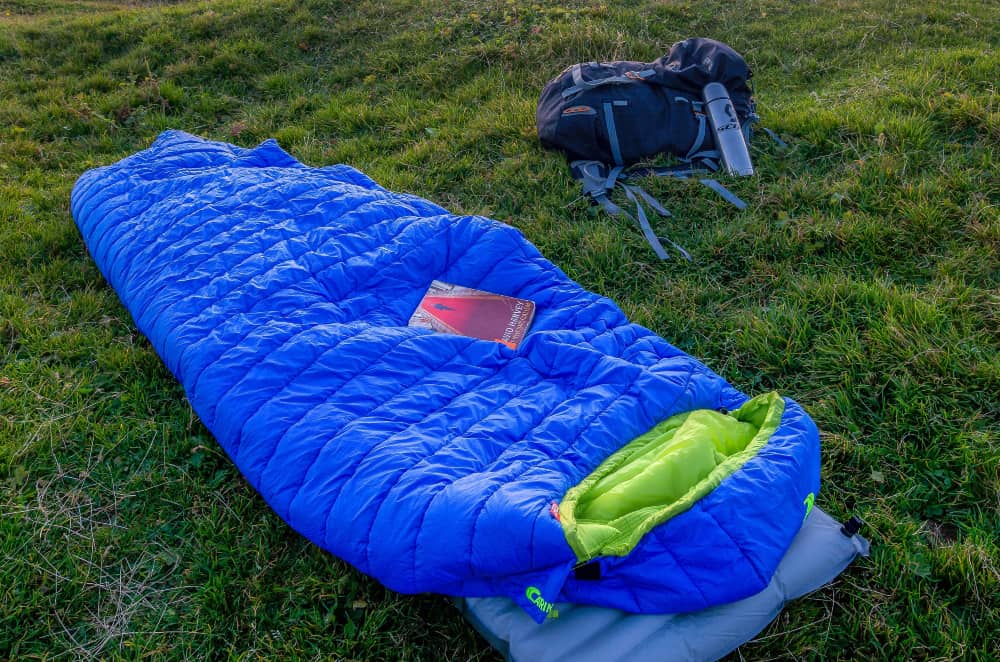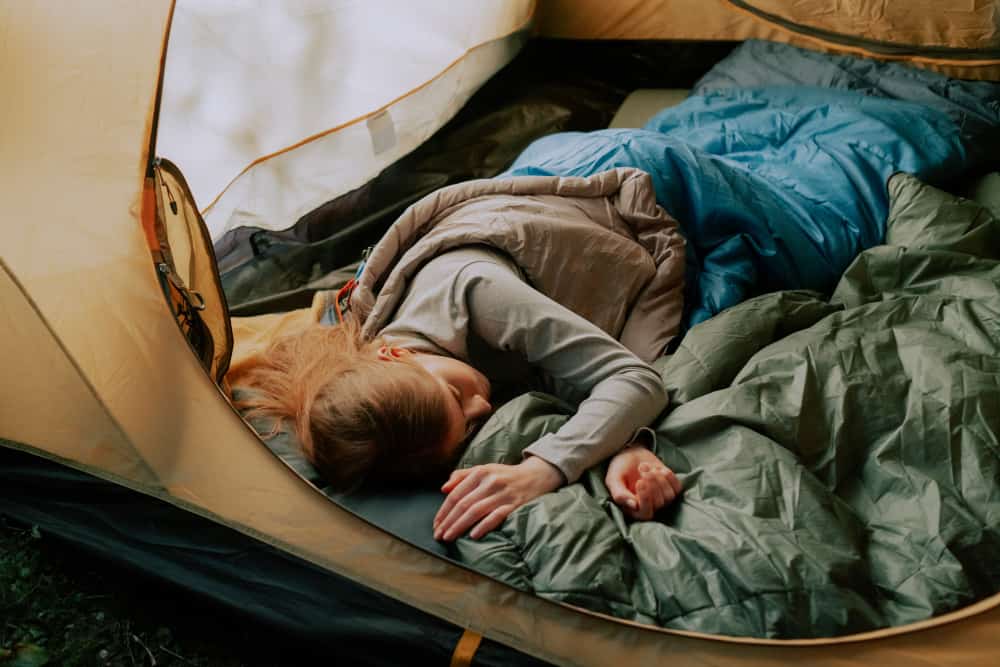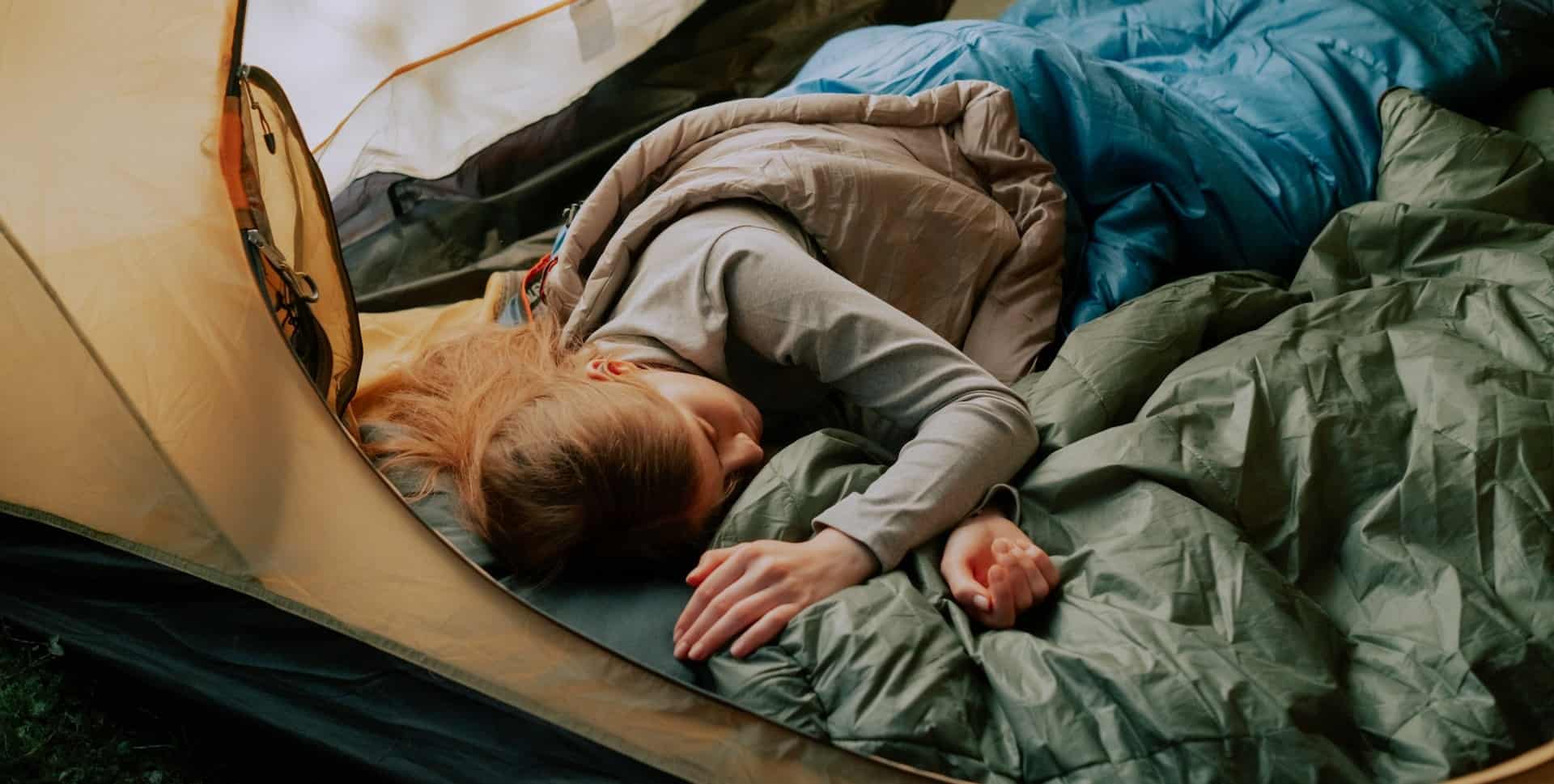Choosing the optimal temperature for your sleeping bag might be challenging. A sleeping bag’s primary purpose is to keep you nice and warm when it’s chilly without leaving you drenched in sweat when the temperature rises.
Many avid campers and hikers own more than one bag in their quest to find the optimal load distribution. However, the average, frugal outdoor enthusiast may not have the funds to purchase many high-quality sleeping bags with appropriate temperature ratings.
Manufacturers of outdoor equipment assign each sleeping bag a temperature rating. The purpose of these scales is to help you determine the ideal circumstances for using a given sleeping bag. Some sleeping bags are for cooler weather, and some have temperature ratings better suited for summer.
If you are in a pickle over which sleeping bag to get for your backpacking or camping trip, we are here to help! This article will discuss which sleeping bag temperature ratings best suit certain environments, weather conditions, etc.
How Do Sleeping Bag Temperature Ratings Work?
A sleeping bag’s temperature rating is the most important consideration since it is unpleasant to be either too cold or too hot while sleeping. You should choose a sleeping bag that will maintain your warmth at or below the lowest temperature you expect on your expedition if you understand what the environment will be like.
However, determining the appropriate temperature rating for a sleeping bag is more nuanced than it may appear. Knowing how they’re evaluated for temperature in the lab and the meaning of certain terminology you’ll encounter helps make sense of sleeping bag temperature ratings.
When shopping for a sleeping bag, it is vital to take into account the following factors in addition to the temperature ratings;
- Due to the many factors, you cannot replicate in a controlled environment, the sleeping bag temperature ratings obtained in a laboratory are unlikely to accurately reflect how comfortable a person will be in a given situation.
- Suppose you want to compare sleeping bags from various manufacturers. In that case, it’s helpful to look at their temperature ratings, which should be based on lab testing such as ISO (International Standard Organization) or EN (European Norm) ratings.

Temperature Rate Testing Procedures for Sleeping Bags
In the past, companies evaluated sleeping bags inside their own laboratories using different methodologies, so consumers had no idea if their temperature ratings were the same as other manufacturers.
The industry figured out a means to combat this issue by deciding to put all sleeping bag brands through the same testing procedures. These days, bags from most manufacturers are sent to a third-party lab to be rated and compared for temperature. The industry’s first widely used standard was the European Norm (EN) standard.
The EN sleeping bag test has been replaced by the International Standards Organization (ISO), although the testing procedure is otherwise essentially comparable. Every bag receives an overall grade based on the results of established and controlled lab testing, with two temperatures in that range being highlighted:
- As the name implies, a lower temperature rating specifies the lowest temperature that a person who prefers to sleep warmer may still feel cozy and warm. Name-brand sleeping bags for guys will usually have this temperature rating.
- The comfort grade suggests what temperature a chilly sleeper could find just right. Designer sleeping bags for ladies typically have this temperature rating.
Are All Sleeping Bag Temperature Ratings Tested The Same?
Some sleeping bags do not have an EN or ISO certification since the tested norm does not apply to children’s bags or those made for frigid temperatures and winter camping. It’s also possible that companies won’t submit bags designed for light or casual use to ISO testing.
If the sleeping bag’s temperature rating isn’t qualified as “comfort” or “lower limit,” it’s likely the manufacturer’s estimate rather than the result of EN or ISO testing. Use that specification as a general rule of thumb rather than as a definitive ranking against which other brands of comparable bags may be judged.
Temperature Ratings Are Not Set In Stone
Ratings for acceptable temperatures are approximations rather than absolutes. They are determined by placing a sleeping pad underneath the bag and dressing a mannequin in base layers before placing it in the lab. This technique assures that all sleeping bag tests are conducted similarly.
However, it cannot account for variables like people’s clothes, body types, temperature preferences (cold or warm sleepers), sleeping equipment, unpredictable weather conditions, people’s diets, and so on. The bag’s comfort during outside use will likely be lower than its verified temperature rating.
For year-round usage, a sleeping bag rated for temperatures between 10- 20 degrees Fahrenheit is ideal. Adding a liner may significantly boost comfort and warmth during the colder months.
Increasing the temperature by 10 degrees Fahrenheit may be necessary for warmer areas. A sleeping bag rated for 30 degrees Fahrenheit should keep you warm and cozy on summer camping outings. The table below shows the average sleeping bag temperature ratings for certain environments, seasons, and weather conditions;
| Weather Condition/Season | Temperature Rating | Product Example |
|---|---|---|
| Cold-weather/Winter | 20°F (-7°C) & lower | FARLAND Sleeping Bags 20℉ |
| Summer/Low-elevation | 32°F (0°C) & higher | Oaskys Camping Sleeping Bag Warm & Cool 50 to 68°F (10 to 20°C) |
| 3-Season Sleeping Bags | 20 to 32°F (-7 to 0°C) | SOULOUT 3-4 Season (32-77°F/0-25°C) |

Why Do Women’s Sleeping Bags Have Comfort Ratings?
According to studies of biological variations between the sexes, women have always reported feeling colder in the same sleeping bag as men. Therefore, it makes sense for a woman’s sleeping bag to aim for the comfort grade, which corresponds to the optimal temperature for chilly sleepers, and many manufacturers still do so.
Why Is This?
The actuality is that everyone has a somewhat varying core temperature depending on their age, gender, body composition, and blood flow.
The subject of healthy discussion is how these variables affect one’s sense of warmth. Still, it is commonly agreed that having less muscle mass in relation to body surface area might make a person feel chilly.
This is why the EN rating specifies warmer temperatures for females to sleep comfortably than for males. This is because of broad assumptions about the relative amounts of muscle tissue in the sexes.
The same is true for the elderly, who, because of a natural decline in muscle strength with time, are often less comfortable in cool temperatures than their younger counterparts.
You must ultimately consider not just the tested and assumed temperature levels but also your own “internal” thermostat. Choose a sleeping bag that can withstand lower temperatures if you tend to get chilly easily.
The outcome of applying comfort rating tests for women’s sleeping bags include;
- When shopping for a sleeping bag, those who get warm at night should pay attention to the sleeping bag’s lower temperature limit ratings to prevent wasting space.
- More insulation is required to bring the comfort rating of one bag up to the level of another sleeping bag’s minimum temperature rating.
How Can You Optimize The Warmth Of Your Sleeping Bag?
The best way to make your sleeping bag feel warmer is by having a warm tent. There are various ways to stay warm in a tent. Below are a few of the best methods to stay warm in your tent;
Stay Off The Floor
Though sleeping on a giant air mattress may seem absurd, you shouldn’t put yourself straight on the floor, either. Adding an insulation layer between your feet and the tent floor is essential. If you want to sleep outside, you can either bring a camping cot or use a self-inflating mattress.
Bring Along Some Extra Blankets
You may use blankets in a wide variety of ways. You can use a soft fleece blanket for more than just wrapping yourself in it to stay warm. You could also use it to sleep on (to insulate the floor) or to cover the tent for further thermal protection and insulation.
Get A Gas-Powered Portable Heater
Assuming you have the proper kind, small gas heaters are fine to use inside a tent. The major benefit of these heaters is that they don’t require electricity to function and may instead be fueled by butane or propane.
Ensure that you choose the proper one by considering your tent’s size, the number of occupants, and the desired BTU output and runtime. The most efficient portable gas heaters produce roughly 18,000 BTU and may operate for 6+ hours on a single tank. The Mr. Heater F274800 is a great option to try.
Stock Up On Hot Water Bottles
A hot water bottle may provide quick warmth simply by being filled with water, which you can boil in minutes. If you do not have a space heater, just throw a couple of hot water bottles into the sleeping bag, and you should be OK.
Drink And Eat Hot Food And Beverages Before Bed
Heat your food and drink before consuming it. Even though this won’t keep your tent toasty, it will keep you nice and toasty inside. Raising your core temperature with a hot meal or beverage is a viable option. As an alternative to drinking cold water, try making a cup of tea and eating some soup.
